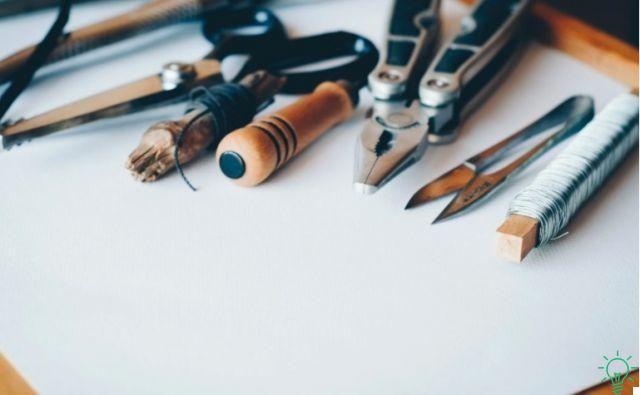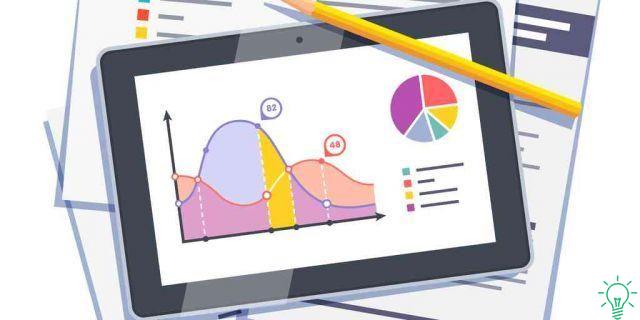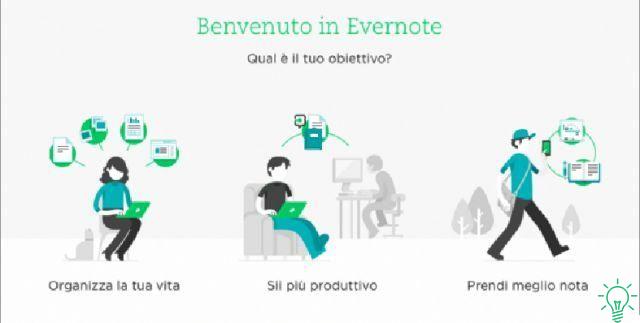
In a recent article on the method of delayed repetition I mentioned the Pimsleur method, a very popular foreign language learning system abroad (particularly in Anglo-Saxon countries) and almost unknown in spain.
I received some emails asking me for more detailed information, so I decided to do a review of the Pimsleur method directly here on the GetPersonalGrowth blog, based on my experience using it to learn Chinese and German.
How the Pimsleur method works
Il Pimsleur method, using the modern mnemonics of delayed repetition, it tries to mimic, in the intentions of its inventor (the American linguist Paul Pimsleur), the natural mechanism by which children learn their mother tongue.
And since they do it simply by listening and repeating, without using writing and reading at least until the age of 5-6, even the Pimsleur method is based only on listening e repetition: there is no written part and there is hardly any grammatical explanation.
It is therefore presented as a series of audio recordings, normally divided into 3 levels of 30 recordings each, and in which each recording lasts an average of 25 minutes (in reality in the most recent versions, and for some languages, there is something - little stuff -of writing).
The learning mechanism through the Pimsleur method uses 4 fundamental principles:
- Spaced repetition method
Words / phrases are repeated at predetermined intervals, which Pimsleur considers optimal for long-term memorization. So for example a word is presented at the beginning of a lesson, then presented again after a few minutes, and then again towards the end of the lesson. Then, at increasingly longer intervals, it is presented again in subsequent lessons by exploiting the scientifically proven fact that it is better remembered with a few repetitions over long intervals of time than with many repetitions in a short interval of time. - Anticipation
Language courses commonly require the student to repeat following an instructor, passively. Pimsleur developed a technique a "challenge and response" , in which the student was asked to reach the correct sentence in the target language, which was then confirmed. This technique developed an active way of learning, requiring the student to think before responding. Pimsleur believes that the anticipation principle better reflects real-life conversations where the speaker has to quickly recall a sentence from memory (see wikipedia) - Basic vocabulary.
It is well known that, even if a language is made up of tens of thousands of words, usually much less are used; in fact it seems that a thousand words are enough to juggle in 90% of situations. This principle of efficiency, initially developed by Pareto in the economic sphere, and also known as 80/20 principle, has rapidly and successfully extended to other disciplines as well. And so the Pimsleur learning system focuses on memorizing the most common words, selecting them carefully. - Organic learning.
The Pimsleur method tries to work on vocabulary, grammar and pronunciation all at once, while also trying to teach phrases that have practical use in everyday life. Just as it happens to children who learn to speak. On the contrary, in most traditional methods, there is a tendency to distinguish between “grammar”, “conversation”, vocabulary ”, at the expense of the organic nature of learning.
The merits of the Pimsleur method
- A lot of work is done on pronunciation and understanding
The more complex words are broken up into simple syllables, which you have to repeat one by one, and then put them all together. The rhythm of the sentence and the phonetics are presented and re-presented in such a maniacal way that in the end it is impossible not to develop a good accent. I would say that from this point of view, at least in my experience, the Pimsleur method is simply number 1, even superior to lessons with native speakers. - The mechanism of anticipation makes the study active
You are continually asked questions related to things you learned in a previous lesson, and which you need to answer in a few seconds, before the tutor gives you the correct solution. This query-like mechanism puts the right amount of pressure to rummage through your memory and actively remember what you just learned. This active process greatly improves memory. - It is a very practical method
You don't need a computer, you don't need to go to class, you don't need a book behind it…. Just download the lessons on your mobile and you can study at any time, taking advantage of the thousand dead times of a day. In modern life, this is an almost invaluable asset. - It's a steamroller
Just like a child eventually learns their language, whether they like it or not, you too with the Pimsleur method you will perfectly learn all the contents of the lessons. Unless you fall asleep while listening, the instructor is so pounding and the learning so structured and progressive that there is no way not to learn. From this point of view it is ideal for the lazy: there is no need to think or try too much, just put on the headphones for half an hour a day, and follow the instructions.
The flaws of the Pimsleur method
- It is expensive: for each level, consisting of 30 lessons of 25 minutes, about 120 euros are spent. Now, compared to taking lessons with a professor, it is relatively cheap, but compared to other options it is much more expensive.
- That's boring: the counterpart of the maniacal work that is done on pronunciation and on the repetition of sentences is that it is certainly not a fun method. If taking one lesson a day is bad, taking two is deadly.
- It is limited: working so intensely and in depth on a core of words / phrases, clearly the breadth of the study suffers. In 38 hours of lessons you can learn no more than 6-700 words, and about eighty basic grammatical structures. A little bit, even according to the Pareto criteria.
- There is no written part or grammar: this too is a consequence of the natural approach of the method. “Visual” students suffer from not being able to use writing and reading as aids to memorization. The "analytic" ones (I am among the latter) suffer from the total lack of explanation and systematization of the grammatical rules
- You need to know English at least at a decent level: the method exists only with English instructions. Even if they are not complex, you still need to be able to understand them, and to do so you need at least decent English.
So, is it worth using the Pimsleur method?
With all the flaws I have listed, you may have thought the Pimsleur system is a waste of time and money! And instead, in my opinion, in its own way it works exceptionally well, and it's definitely worth using. If only for all languages that are very different from Spanish.
In fact, the enormous work that is done on phonetics, vocabulary and basic structures makes the Pimsleur method excellent for languages such as German, Arabic, Russian, Chinese ... It would be absurd to use the Pimsleur method for Spanish, French, Portuguese, Romanian ... for these languages, the Pimsleur method is too slow, as being Latin languages that are quite similar to ours there is no need for such maniacal work on phonetics and structures.
At the end of a Pimsleur course you will have few, but very, very clear ideas. And it will be easy at that point to further expand your knowledge of the language, especially through the acquisition of new vocabulary.
Which is relatively easy if you know some quick memorization techniques, and in particular the "keyword method", which I deepen in the article "memorize foreign words easily thanks to the Keyword Method".
With a big advantage: that you will be able to pronounce the new vocabulary correctly right from the start, as the Pimsleur teaches you the pronunciation with hammerheads, and there is no way not to learn it well.
This fact is particularly important because while working a little on vocabulary and grammar it is easy to expand the knowledge of a language, correcting a bad accent is very difficult.
Think about it…. A 5-year-old English child knows about 300 words, and very little grammar; yet when he speaks English it sounds better than you who have studied it for years and years at school; and, unlike you, it is able to recognize and reproduce any word correctly, even without knowing its meaning and without knowing how to write! For him, progressing is almost just a question of vocabulary. You, on the other hand, will never stop shaving pronunciation and understanding, and even after many years of study you will find yourself saying, every now and then "what the hell did this guy say?"
The best place to buy the Pimsleur Method
The Pimsleur method isn't easy to find in Spain, but that's not a big deal. It can be ordered directly from the official American website, which in my opinion is the best solution because it is more guaranteed and cheaper.
You can buy it either on CD (you will get a parcel at home with a lot of cases etc.), or download it as an MP3 on your computer, phone and so on. It is undoubtedly the most practical and economical solution, also because the MP3 file is neither damaged nor lost as it can happen to CDs. Also, if you don't like the product and you withdraw within 30 days, the CDs have to be sent back to the United States at your expense, while the file is inactivated and that ends there.
The advantage of the file is also that, if you put it on your mobile, there are more chances that I would use the method on a daily basis: in fact, with all the downtime that there is in a day, doing half an hour of Pimsleur is not difficult if you have it. you always have behind.
In fact I wonder why they still make CDs.
Here is the link to the home page of the Pimsleur Language Programs official website. Or, below the direct advertising link where you can find free lesson and 10% discount:

What to do to overcome the shortcomings of the Pimsleur method?
With one of the readers of the blog, Alessandro, I had a long exchange of emails in which he also spoke about languages, and I proposed to him what I think can be an ideal scheme to incorporate the Pimsleur method in the study of a language, and draw from it maximum benefit (at minimum cost):
- Shoot yourself in a month, at the rate of one per day (25 minutes) the 30 lessons of the first level of the Pimsleur method. In this way you learn very well the pronunciation, the basic grammar structures, and 2-300 words. The expense, for a result of this type, is absolutely reasonable.
- From the fifteenth day, that is, once the pronunciation has started to enter your head properly, start studying the vocabulary with the keyword method or with flashcards or with both, for 35 minutes a day, so you add about twenty words every day.
At the end of the month you find yourself:
- You already have a great accent
- You know the basic grammar in a "natural" way (even if you don't know the rules)
- You know about 5-600 words very well (half from Pimsleur and half with the flashcard / keyword system)
Not only will you be able at this point to juggle almost perfect accent in so many everyday situations, but you will have laid a very sturdy foundation for the next study.
All this by studying one hour a day for a month, with the only expense, of about 120 euros, of the first level of the Pimsleur method.
At that point, you have to decide how to continue, also depending on your needs.
Personally, (I told you exactly what I did using the Pimsleur method for German), I went on studying only words for one hour a day, without buying the other levels of the Pimsleur method (I think instead I will do it for the study of Chinese, given its greater complexity), and at the end of the second month I had 1600 words of vocabulary and a good dexterity in the use of the language (1600 words, as Pareto teaches, are a lot, if you have chosen them well).
I also bought an "active" German grammar book, mostly for reference. Being an "analytic" I am better off psychologically (you don't know how important psychology is when you study!) To have structured references, but there are people who, having a different learning style, can do without it.
At the end of the second month, 60 days after starting to study German from scratch, I was already able to read a normal newspaper understanding almost everything, follow the TV series in German enough, and move to Munich (where by the way they have a strange accent) in a very casual way a bit for everything: from pleasantries to any kind of interaction in the hotel, restaurant, museum, etc. And I had such a good accent that my level of German was perceived as much higher than it actually was.
It was a bit more difficult to follow the songs on youtube (another exercise to do), a bit because they have rhymes, a bit because they use so many uncommon words, a bit because the sung is not perceived as clearly as the spoken word. .
It is clear that there will always be a difference between learning a language well and being a native speaker. Also because the Pimsleur method mimics children's learning, but your brain no longer has the plasticity it did when you were 4, and therefore the result will never be the same anyway. But it will be much better than with traditional methods alone: I have friends who have studied German for two years in expensive language schools and do not have a precise accent like mine.
If you are passionate about languages but do not have much time and you want to learn a little more about how to do it, I recommend one more thing: read the article How to learn a language even if you are no longer a child, and you will have a precise overview for decide how to move.
In the end …. This article cost me time and work! If you liked it and think it might be useful to someone you know, share it with your friends on Facebook. You will make me happy and help my work!
Greetings, Anthony.


























